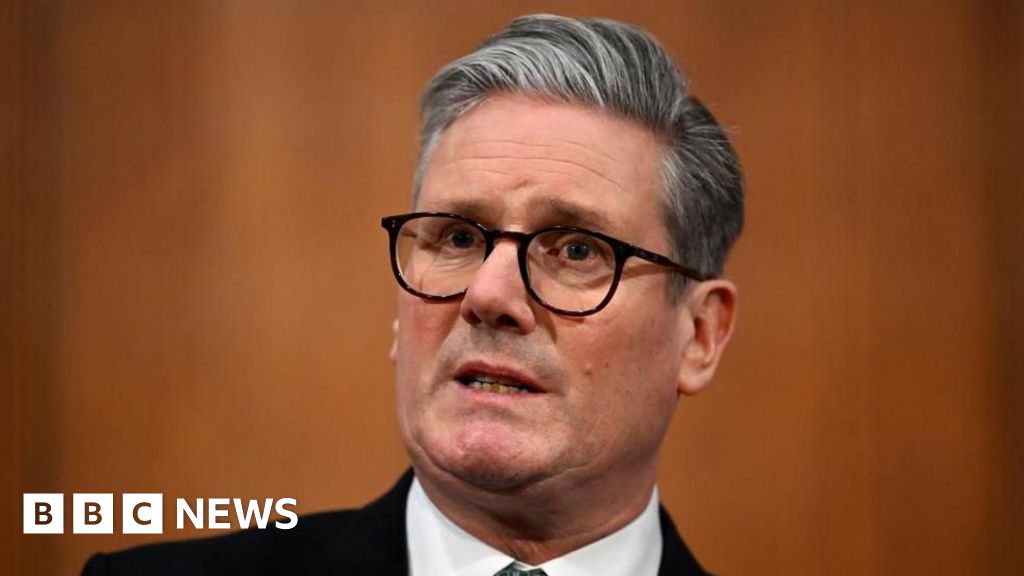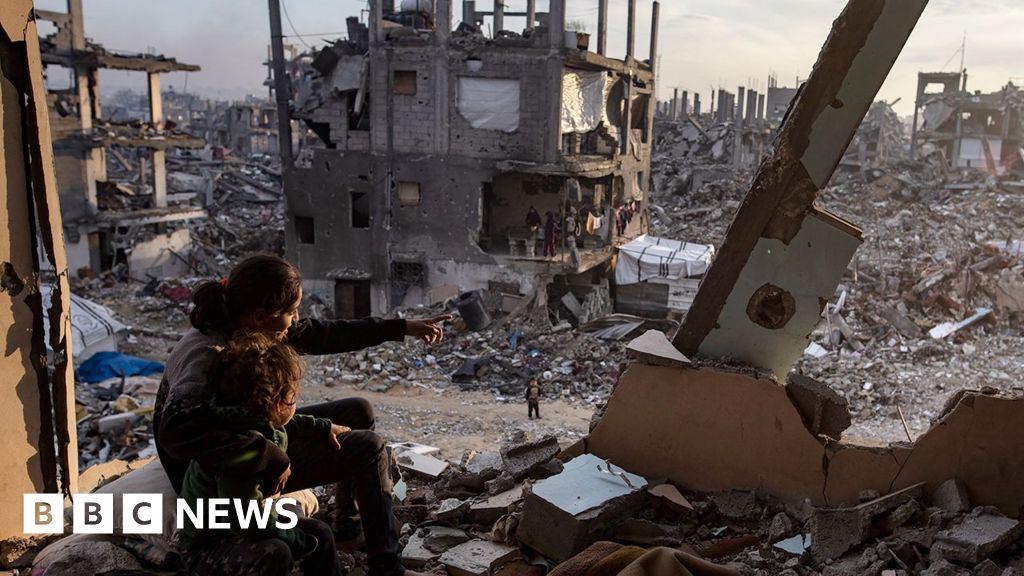


EPA
The ceasefire agreement between Israel and Hamas, which began on 19 January, now appears to be in jeopardy, with signs indicating it could completely unravel.
A senior source from Egypt revealed to the BBC that both Egypt and Qatar are “amplifying their diplomatic initiatives to preserve the ceasefire.” A prominent delegation from Hamas has arrived in Cairo to engage in discussions aimed at “mitigating the existing crisis,” according to a Hamas representative, who confirmed their commitment to abiding by the agreement’s stipulations.
On Tuesday, Israeli Prime Minister Benjamin Netanyahu warned that failure to return hostages by Saturday noon would result in an end to the ceasefire, with the Israeli military poised to intensify operations.

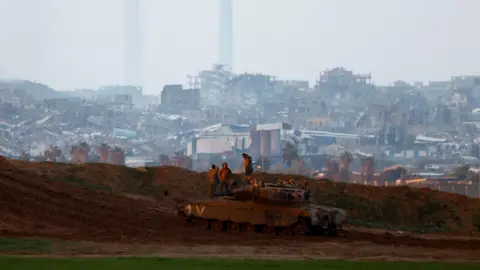
Reuters
Confusion surrounds whether Netanyahu’s remarks pertain to all 76 hostages still held in Gaza, as prescribed by an ultimatum from U.S. President Donald Trump, who reacted to Hamas’s threats that could compromise the agreement.
Hamas indicated that Israeli violations of the ceasefire—particularly regarding aid—could lead to the postponement of hostage releases scheduled for Saturday.
Compounding the issue, Trump has proposed a controversial plan for U.S. intervention in Gaza, suggesting the relocation of its nearly two million Palestinian residents. On Wednesday, the White House reiterated Trump’s stance amidst reports that Jordan’s King Abdullah II dismissed the idea in talks held in Washington.
“The king prioritizes keeping Palestinians in their homeland,” White House Press Secretary Karoline Leavitt stated, adding that Trump believes relocating them to safer areas is a more favorable solution.
Amidst this chaotic landscape, what additional insights can we gain about the behind-the-scenes developments?
After a lengthy four-hour meeting of the Israeli security cabinet, local reporters expressed confusion over conflicting briefings. Initial reports seemed to clarify that Netanyahu’s demand for the release of “our hostages” referenced the initial three male captives, but it soon emerged that Israel was anticipating the release of the remaining nine hostages scheduled for the ceasefire’s first stage, during which a total of 33 captives are expected to be freed.
Israeli Minister Miri Regev, a Netanyahu ally, asserted on social media that the decision was “crystal clear,” reiterating Trump’s ultimatum: “By Saturday, everyone will be released!”
Furthermore, Finance Minister Bezalel Smotrich has escalated rhetoric, threatening consequences for Hamas if all hostages are not returned, suggesting actions that would leave Gaza devoid of humanitarian aid or resources.
These statements reflect the growing influence of far-right ideologies within Israel, fueled by Trump’s post-war vision for Gaza, prompting concern among Israeli security officials who negotiated the current ceasefire amid fears for the hostages’ safety.
Reports indicate that efforts are underway to secure the release of the next three captives held by Hamas as scheduled this weekend. Families of hostages and their supporters are increasingly anxious about the situation, as are many weary residents in Gaza.

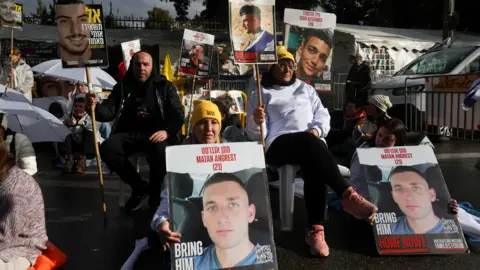
Reuters
The involvement of Khalil al-Hayya, the leader of Hamas in Gaza, who is leading a delegation to Cairo to discuss the agreement’s implementation, underscores the group’s efforts to restore the ceasefire.
Since the start of the agreement, 16 Israeli hostages have been exchanged for hundreds of Palestinian detainees. Additionally, five Thai agricultural workers were released. Israeli forces have also retreated to just inside Gaza’s perimeter, including the border with Egypt.
While this has provided temporary calm, enabling hundreds of thousands of displaced Palestinians to return home and facilitating the inflow of humanitarian aid, challenges remain due to allegations from Hamas that Israel has not fulfilled its obligations under the initial phase of the truce.
Hamas contends that Israel was supposed to allow the entry of approximately 300,000 tents and 60,000 mobile homes into Gaza, vital as many people face harsh winter conditions upon their return to the ruins of their homes.
Additionally, shortages of fuel and generators are reported, particularly in northern Gaza, where these resources are urgently needed for essential services like water access and food production.
Although verification is complicated, UN data indicates that since the ceasefire was enacted, shelter assistance has reached over 644,000 individuals across Gaza, including tents and other essential materials.
The Israeli military organization Cogat affirmed Israel’s commitment and compliance with facilitating the daily entry of 600 humanitarian aid trucks into Gaza, claiming hundreds of thousands of tents have already entered since the deal initiated.

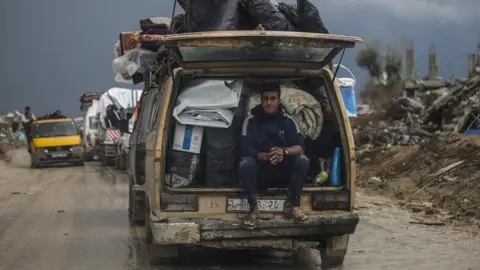
EPA
While discrepancies in reports persist, it seems possible that mediators could resolve the issues related to the aid Israel permits into Gaza.
An Egyptian official mentioned that “Cairo and Doha are urging all stakeholders to abide by the agreement amidst complicated political and ground realities that make the task challenging.”
“The continuation of the ceasefire is vital for all parties involved, and we caution that any collapse will trigger a new wave of violence with significant repercussions in the region,” the senior Egyptian source warned.
Even if the immediate deadlock is resolved by this weekend, key discussions regarding the next phase of the ceasefire are yet unresolved. The initial agreement is set to conclude in March unless further negotiations extend it, but such talks have faced delays.
Israeli Prime Minister Netanyahu postponed deliberations concerning the subsequent phase due to growing internal pressures and indications that Hamas remains a formidable political and military presence in Gaza, contrary to his primary war objectives.
During hostage exchanges and aid provisions, Hamas has sought to reinforce its own power narrative.
Although the group has previously shown willingness to form alliances with other Palestinian factions, disarmament remains unlikely. Moreover, Trump’s controversial proposal to transform Gaza into a tourist destination has sparked widespread discontent across the Arab world, especially regarding the idea of relocating its residents to Jordan or Egypt.
In contrast, Egypt asserts that it has drafted a comprehensive reconstruction plan for Gaza that ensures Palestinians remain in their homeland.
On the horizon, a summit involving leaders from Egypt, Qatar, Jordan, the UAE, and Saudi Arabia is scheduled ahead of a February 27 conference in Cairo.
The ongoing discussions about Gaza’s future amplify mistrust and confusion as efforts to resolve immediate challenges continue to fall short.
Additional reporting by Wael Hussein in Cairo




